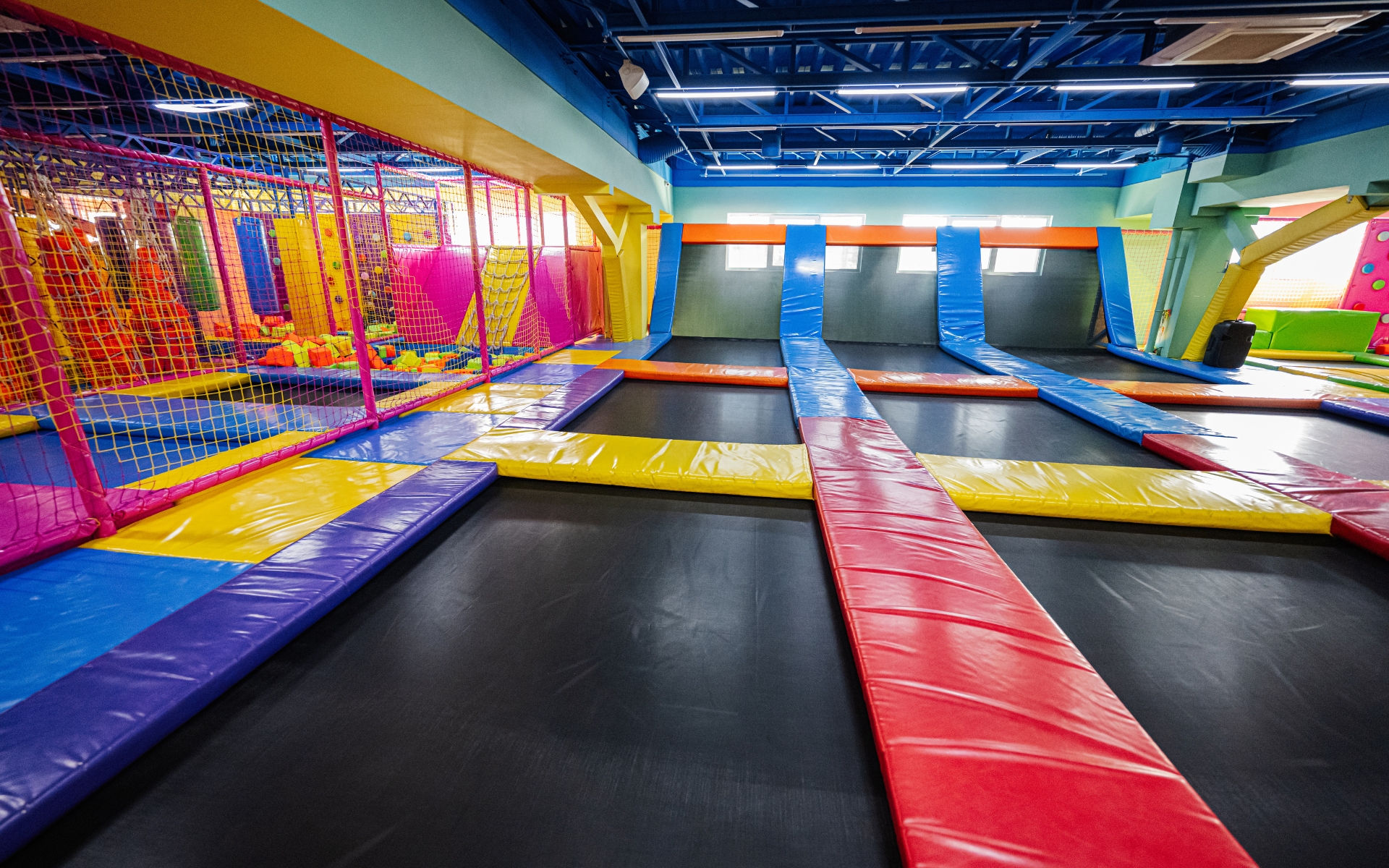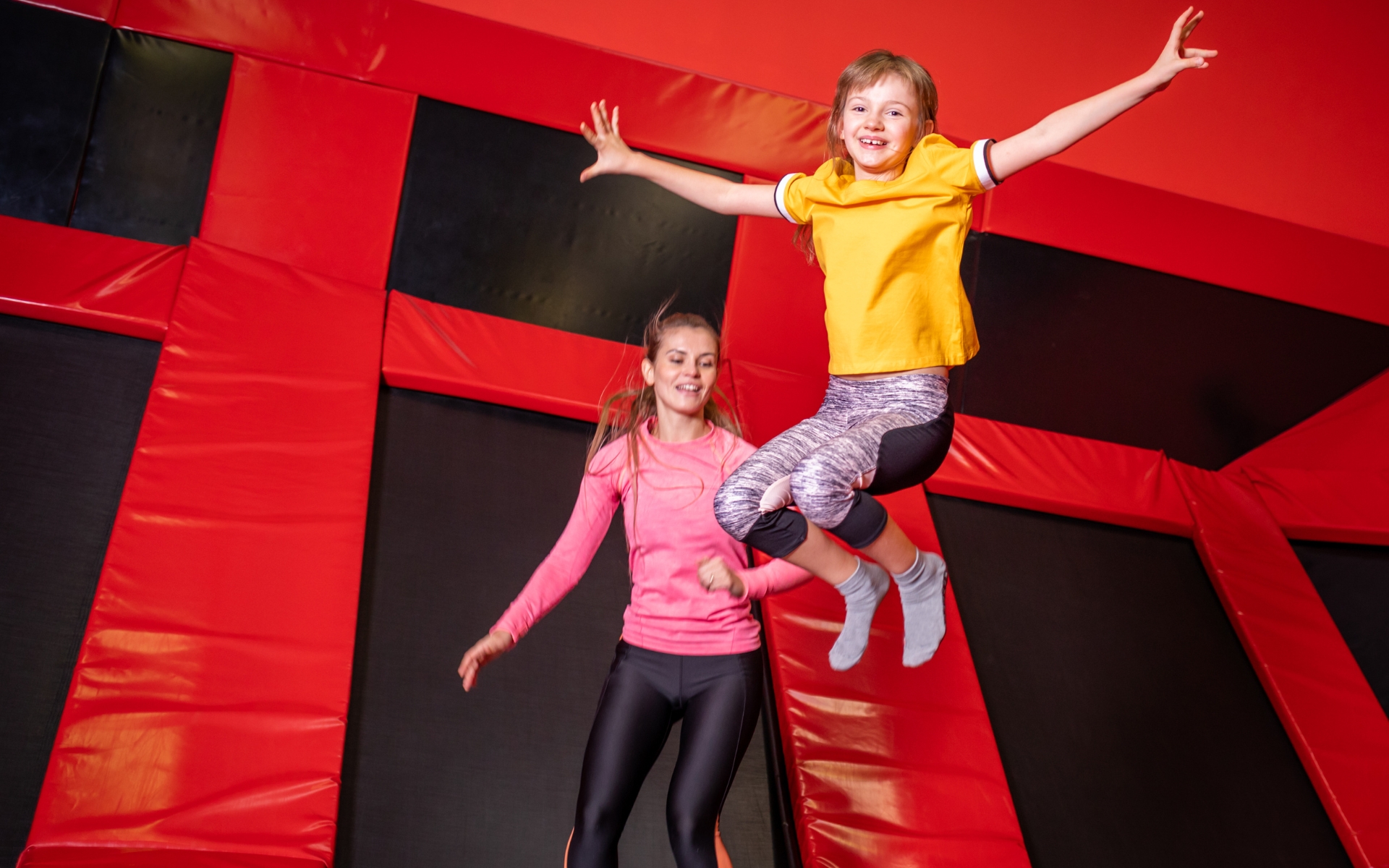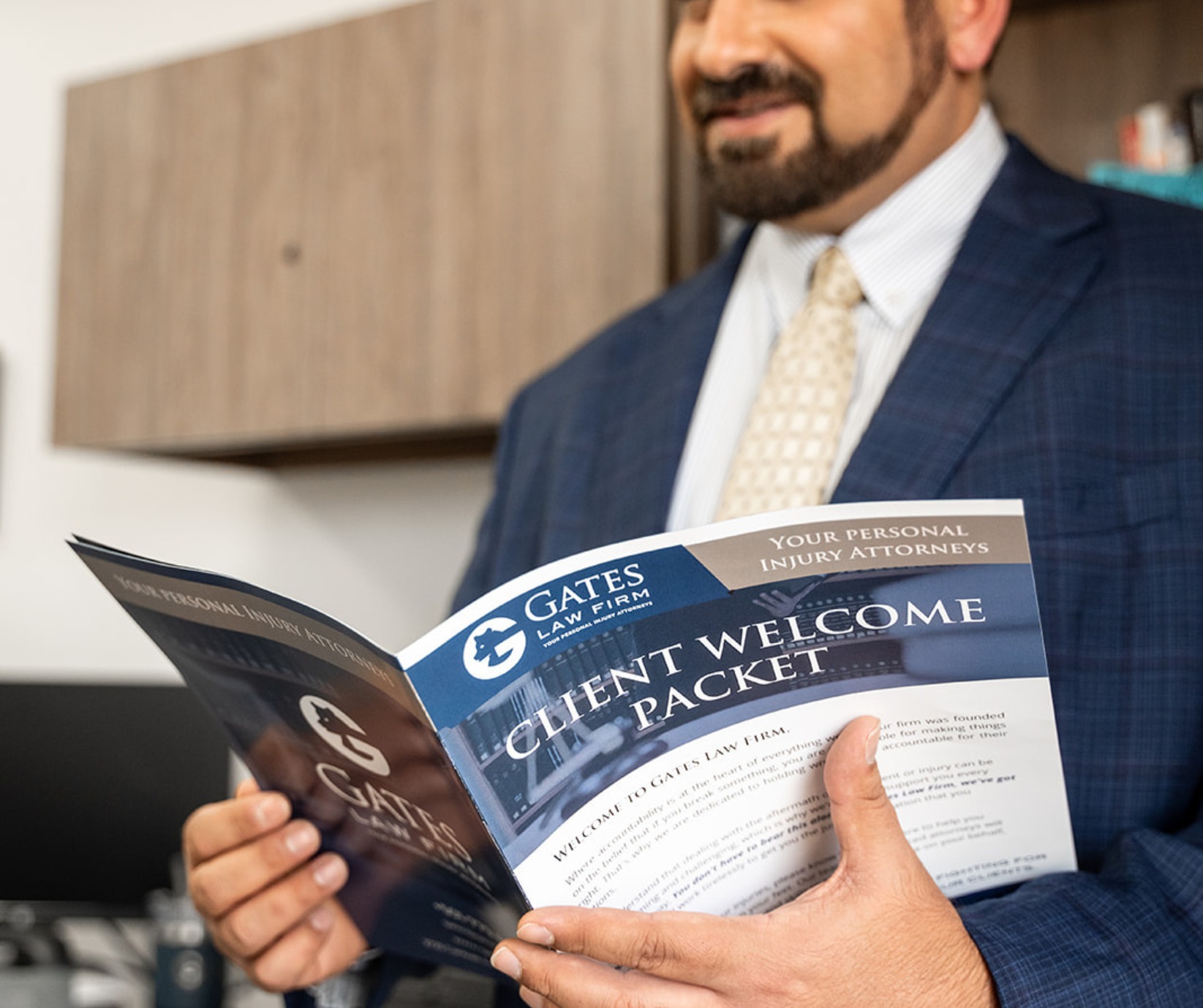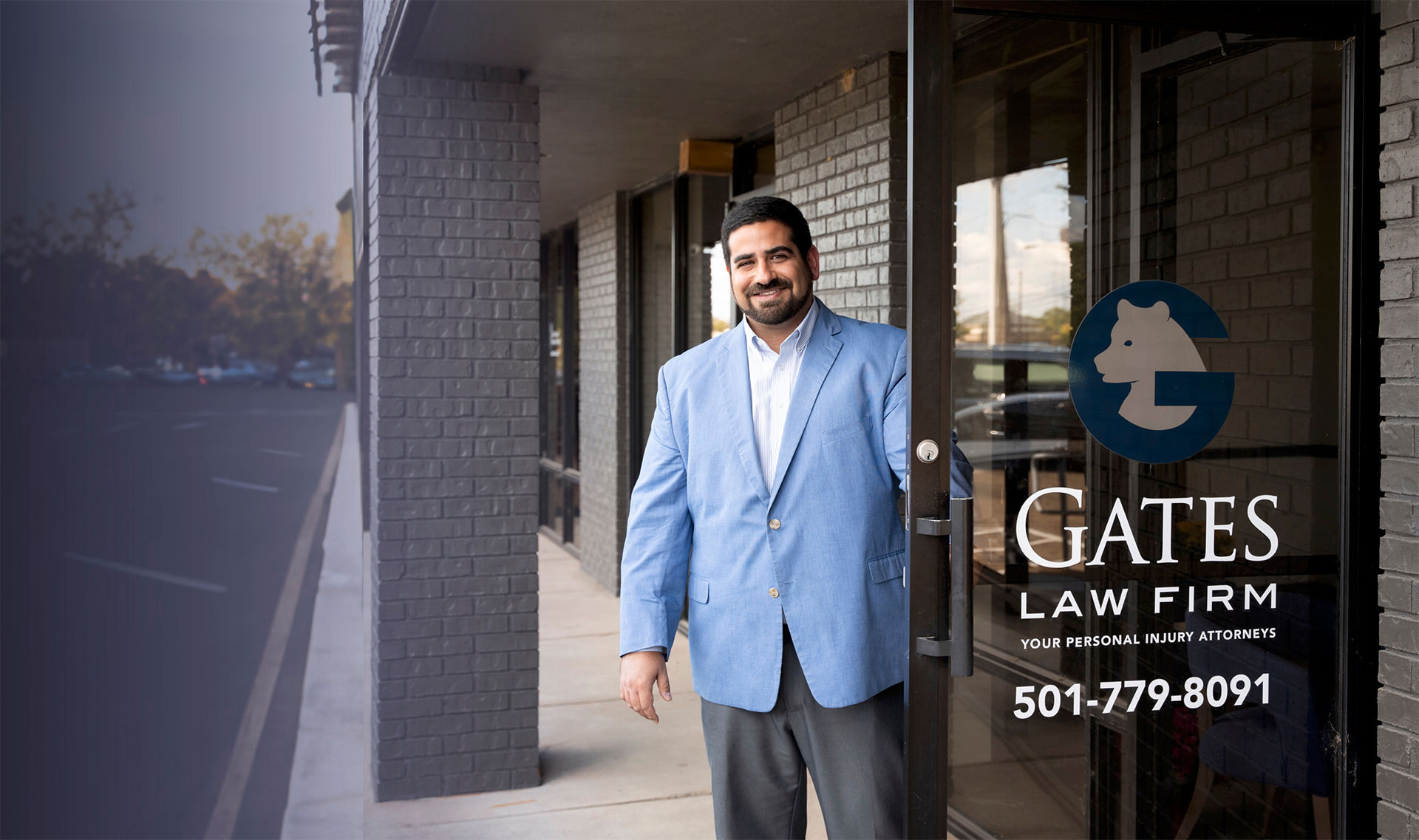Table of Contents
Toggle
Rated 5.0
on Google
Let us help when you need it most









Trampoline parks have become a popular destination for families across Arkansas, offering high-energy fun for children of all ages. But beneath the excitement, these facilities can present serious safety risks, especially when operators fail to follow proper safety protocols. From overcrowded jump zones to poorly maintained equipment, the hazards can lead to devastating accidents. Children, in particular, are vulnerable to broken bones, concussions, and other major injuries that can have lasting effects on their health and development. When a fun outing turns into a medical emergency, parents are left searching for answers and accountability.
If your child was seriously hurt at a trampoline park due to unsafe conditions or staff negligence, you may have legal options. At Gates Law Firm, PLLC, our team of Arkansas child injury claims lawyers has extensive experience with handling trampoline park injury cases and is here to help families seek the justice they deserve. We can investigate the circumstances of your injuries and create a legal strategy to pursue full compensation for your child’s injuries.
Call us today at (501) 779-8091 to schedule a free consultation with an experienced Arkansas commercial trampoline park lawyer.


Free Consultation

No win, No fee

Top Attorneys

Outstanding Results
Client testimonial


Tiana C
My family and I are very thankful for the amount of detailed time, patience, kindness, and commitment Mr. Gates had towards our cases. All of my cases thus far have been in need of thor…

Ana Wright
Mr Gates & his staff helped me with my case from beginning to end. I admire their work ethic and most of all excellent representation. Highly recommend to family and friends. Thank you so much!!!

E rae
They are very professional and will work hard to make sure that u get your money and medical bills taking care of. Thanks Gates Law Firm I’m a satisfied client.

Jen L
Joseph is a wonderful advocate for his clients. He’s compassionate, hard working, and effective at getting maximum justice. I would send a family member and friend to him. I highly recommend him!

Darin Watson
Joseph advised us, fought for us, and I could tell he really cared about us. A very good man, and although I hope we’ll not need his services again, I would not hesitate to call him if we did.

Ashlee Pinkston
Mr Gates represented me in the best way possible! I was very satisfied with the service I received and definitely would use him as my lawyer in the future! Very kind. Quick to…

Katelyn Leisenring
Joseph and his team were quick, efficient, and readily available to us any time we had any questions. He was able to alleviate all of our anxieties and guide us in best practices that u…
Beyond compensation
We fight to expose wrongdoing and prevent future harm.
Free Consultation

Indoor trampoline parks have surged in popularity across the United States, and Arkansas is no exception. A decade ago, only a few dozen of these parks existed nationwide; today, there are well over 800 trampoline parks operating in the United States. Arkansas now hosts several commercial trampoline parks in cities like Little Rock, Fayetteville, and Fort Smith, reflecting this rapid growth in family entertainment venues. For many families, these facilities offer an exciting way for kids to burn off energy. However, this popularity has come at a cost: a concerning rise in trampoline park-related injuries.
National statistics underscore the risks associated with trampoline parks:
With new park locations opening in communities from Central Arkansas to Northwest Arkansas, local emergency departments are reporting more trampoline-related accidents involving children.
If your child is hurt due to a park’s negligence, an Arkansas commercial trampoline park lawyer can help hold negligent operators accountable and ensure victims’ rights are protected. We can enjoy these popular parks more safely, even as we address the growing injury problem in our state, by understanding the risks and staying vigilant.
To discuss your legal options and protect your child’s future, contact Gates Law Firm, PLLC today at (501) 779-8091 for a free consultation.
Client testimonial


E rae
They are very professional and will work hard to make sure that u get your money and medical bills taking care of. Thanks Gates Law Firm I’m a satisfied client.

Darin Watson
Joseph advised us, fought for us, and I could tell he really cared about us. A very good man, and although I hope we’ll not need his services again, I would not hesitate to call him if we did.

Katelyn Leisenring
Joseph and his team were quick, efficient, and readily available to us any time we had any questions. He was able to alleviate all of our anxieties and guide us in best practices that u…

Jen L
Joseph is a wonderful advocate for his clients. He’s compassionate, hard working, and effective at getting maximum justice. I would send a family member and friend to him. I highly recommend him!

Ana Wright
Mr Gates & his staff helped me with my case from beginning to end. I admire their work ethic and most of all excellent representation. Highly recommend to family and friends. Thank you so much!!!

Tiana C
My family and I are very thankful for the amount of detailed time, patience, kindness, and commitment Mr. Gates had towards our cases. All of my cases thus far have been in need of thor…

Ashlee Pinkston
Mr Gates represented me in the best way possible! I was very satisfied with the service I received and definitely would use him as my lawyer in the future! Very kind. Quick to…

Trampoline parks are marketed as fun, active spaces for families and children, but the reality is that accidents happen frequently, and they are often preventable. Understanding how and why these injuries occur is essential for identifying liability and protecting future patrons. Below are the most common causes of trampoline park accidents, many of which stem from poor safety practices or inadequate supervision.
| Injury Type | Typical Causes |
|---|---|
| Fractures & Broken Bones | Awkward landings, especially on lower limbs; collisions with other jumpers |
| Sprains & Dislocations | Twisting motions during jumps; improper landings; multiple jumpers on the same trampoline |
| Head & Brain Injuries | Mid-air collisions; falls; attempting flips or stunts without proper supervision |
| Spinal Cord Injuries | Landing on the neck or back; failed stunts; falling off the trampoline |
| Internal Injuries and Other Trauma | High-impact landings; collisions; improper use of equipment |
One of the leading causes of serious injuries in trampoline parks is the presence of multiple jumpers on the same trampoline at once. When participants of different sizes bounce simultaneously, a “double-bounce” effect can occur. This phenomenon happens when the downward force from a heavier jumper increases the rebound for a lighter jumper, unexpectedly launching them higher into the air or off balance. This often results in falls, collisions, or awkward landings, frequently causing sprains, broken bones, or even spinal injuries.
Many trampoline parks allow or fail to discourage risky behavior such as flips, somersaults, or other aerial stunts. Without proper instruction or landing surfaces, these maneuvers significantly raise the risk of neck and back injuries, including traumatic brain injuries and paralysis. What begins as a simple trick can end in a life-changing injury, particularly when attempted by children or untrained guests.
While trampoline parks are typically designed to contain bounce zones, it’s not uncommon for participants to fall from trampolines or into adjacent structures. Some falls result in collisions with hard surfaces or poorly padded elements like steel frames and support poles. Others involve landings in foam pits or airbag zones that are too shallow or improperly maintained, allowing guests to strike the floor beneath with force. These falls frequently result in fractures, head injuries, or internal trauma.
Faulty or worn-out equipment is another major contributor to accidents. Torn trampoline mats, broken springs, unsecured padding, or misaligned platforms all increase the risk of injury. When trampoline parks fail to inspect and maintain their equipment regularly, they place guests, especially children, at greater risk for preventable accidents.
Trampoline parks often rely on minimal staff to monitor large crowds. When employees are poorly trained or fail to enforce safety rules, unsafe conditions go unchecked. Common examples include allowing overcrowded trampolines, ignoring prohibited stunts, or not intervening when children are clearly mismatched by age or size. The absence of active supervision allows hazards to escalate into severe accidents.
Client testimonial


Darin Watson
Joseph advised us, fought for us, and I could tell he really cared about us. A very good man, and although I hope we’ll not need his services again, I would not hesitate to call him if we did.

Debbie Hatfield
Gates lawfirm was very professional and easy to work with. Joseph handled my daughter and granddaughter’s case efficiently and communicated with us very well. We…

E rae
They are very professional and will work hard to make sure that u get your money and medical bills taking care of. Thanks Gates Law Firm I’m a satisfied client.

Amber Souriyavong
I Was definitely in very good hands! Joseph was very professional and I am more than happy with the outcome. He is very down to earth and understanding. I appreciate Joseph taking on my case.

Robert Greer
Joseph did and does an incredible job. Forthright and honest is how I would describe the experience. In one of my most difficult times in my life, he was there as a lawyer and a counsel…

Tiana C
My family and I are very thankful for the amount of detailed time, patience, kindness, and commitment Mr. Gates had towards our cases. All of my cases thus far have been in need of thor…
Beyond compensation
We fight to expose wrongdoing and prevent future harm.
Free Consultation

If your child has suffered a serious injury at a trampoline park, you’re likely facing a whirlwind of medical decisions, emotional stress, and uncertainty about what to do next. The legal process can feel overwhelming, especially when you’re up against corporate insurance companies and liability waivers. That’s where an experienced Arkansas commercial trampoline park lawyer can make all the difference.
At Gates Law Firm, PLLC, we understand how devastating a trampoline park injury can be for a child and their family.
Call us at (501) 779-8091 to speak with an experienced Arkansas commercial trampoline park lawyer and schedule a free consultation. We’re ready to help you pursue justice and secure your child’s future.
Client testimonial


Tiana C
My family and I are very thankful for the amount of detailed time, patience, kindness, and commitment Mr. Gates had towards our cases. All of my cases thus far have been in need of thor…

E rae
They are very professional and will work hard to make sure that u get your money and medical bills taking care of. Thanks Gates Law Firm I’m a satisfied client.

Amber Souriyavong
I Was definitely in very good hands! Joseph was very professional and I am more than happy with the outcome. He is very down to earth and understanding. I appreciate Joseph taking on my case.

Darin Watson
Joseph advised us, fought for us, and I could tell he really cared about us. A very good man, and although I hope we’ll not need his services again, I would not hesitate to call him if we did.

Robert Greer
Joseph did and does an incredible job. Forthright and honest is how I would describe the experience. In one of my most difficult times in my life, he was there as a lawyer and a counsel…

Debbie Hatfield
Gates lawfirm was very professional and easy to work with. Joseph handled my daughter and granddaughter’s case efficiently and communicated with us very well. We…
Learn More
While trampoline parks are designed for entertainment, the injuries that occur inside them can be anything but minor, especially for children. High-impact landings, unpredictable collisions, and unsafe equipment frequently lead to serious trauma. Below are some of the most common major injuries sustained at trampoline parks, many of which can have long-term consequences for a child’s health and development.
These major injuries are often life-altering for a child, hindering physical development, disrupting schooling and daily life, and diminishing overall quality of life. This makes pursuing full legal compensation critical to ensure the child’s medical care and future needs are fully covered.
If your child has suffered a serious injury at a trampoline park, contact Gates Law Firm, PLLC at (501) 779-8091 to speak with an experienced Arkansas commercial trampoline park lawyer about your legal rights and next steps.
In Arkansas, commercial trampoline parks fall under the Arkansas Amusement Ride and Amusement Attraction Safety Insurance Act (Ark. Code Ann. § 23-89-501 et seq.) and the Department of Labor’s safety regulations. Notably, state law does not exempt trampoline devices when they are part of a business charging admission. Arkansas explicitly lists “trampolines” among non-mechanized playground equipment that are normally exempt except when an admission fee is charged for their use or to enter the area where they’re located. This means a paid-entry trampoline park is generally treated as an “amusement attraction” subject to Arkansas’s safety rules, rather than a free-playground device.
Commercial trampoline parks in Arkansas must comply with the same safety and insurance requirements that apply to amusement rides and attractions. These include:
Every operator must carry liability insurance of at least $1,000,000 per occurrence for any amusement ride or attraction that isn’t exempt. This requirement ensures that funds are available to cover injuries or property damage. Trampoline park operators cannot lawfully open without this insurance in place. Operating without the minimum insurance is a violation of state law and can trigger enforcement action.
Arkansas authorities actively regulate trampoline parks for safety. Operators are required to notify the Arkansas Department of Labor before opening or operating any new amusement attraction (which would include a trampoline park) in the state. An initial safety inspection by a state-certified amusement ride inspector must be performed at setup, and regular inspections are mandated going forward.
Permanent amusement attractions operated for profit (like most trampoline parks) are inspected by the Department at least twice each year. Arkansas’s rules specifically note that patron-propelled attractions (such as inflatables, climbing walls, and, by extension, trampoline devices) must undergo safety inspection every six months. These inspections check that the park’s equipment, padding, anchoring, and overall operation meet the required safety standards. If an operator refuses inspection or operates without a current inspection certificate, the Department can issue a cease-and-desist order and penalties.
Arkansas has adopted nationally recognized safety standards for the design, manufacture, and operation of amusement devices. The Department of Labor’s regulations incorporate ASTM International (F-24 Committee) standards for amusement rides and devices. In practice, trampoline parks are expected to follow applicable ASTM guidelines (for example, ASTM standards for trampoline courts and foam pits) as part of maintaining a safe environment.
Adherence to these standards covers everything from equipment specifications to having proper safety netting, padding, and trained staff on duty. If a trampoline park makes any major modifications to the equipment, those changes must still meet safety criteria. Failing to meet the “minimum safety standards” set by the state (for instance, lacking proper enclosures or safety padding) can result in the park being “red-tagged” (shut down) until the hazard is fixed. The law empowers state officials to order the immediate closure of any attraction deemed unsafe or not in compliance, with fines up to $10,000 per violation.
If a serious injury or fatality occurs at a trampoline park, Arkansas regulations require the operator to cease operation immediately and report the incident to the Department of Labor within 4 hours (by phone) and follow up with a written accident report within 24 hours. The park must remain closed until state inspectors investigate the cause of the accident. This protocol is designed to ensure that evidence is preserved and any hazardous condition is addressed before reopening.
Lesser incidents (like a defect that causes a ride to shut down for more than 3 hours) also must be reported in writing within 24 hours. Moreover, operators are required to keep on-site records of all injuries and maintenance for at least one year, and these records must be made available to state officials upon request.
For injured patrons, Arkansas’s regulatory framework can play a significant role in a personal injury claim. Because trampoline parks must follow the above safety rules, any violation may serve as evidence of negligence. For example, if an investigation finds that a park lacked the required safety features or skipped inspections, such regulatory non-compliance could strengthen an injured patron’s case that the park failed to exercise due care. In legal terms, breach of a safety statute or regulation intended to protect guests might even be argued as negligence per se. At the very least, proving that a trampoline park violated state standards (such as not having the mandated $1M insurance or ignoring ASTM design guidelines) helps show that the park did not meet the duty of care owed to customers.
On the other hand, compliance with state regulations does not automatically shield a trampoline park from liability. Even if a park is properly insured and has passed its inspections, it can still be liable for injuries caused by staff negligence or hidden dangers. However, the required $1,000,000 liability insurance is crucial for victims—it means there should be an insurance policy available to cover medical bills and damages in the event of an injury claim. I
The Arkansas Department of Labor is the agency that enforces amusement attraction safety. They have the authority to shut down unsafe trampoline parks on the spot and levy fines until compliance is achieved. For example, if inspectors find torn trampoline mats, inadequate padding, or structural issues, they can issue a “red tag” to prohibit use of that equipment until it’s repaired. These enforcement powers mean that safety issues might be corrected before they cause injury, but if they aren’t, the fact that a violation existed could be compelling in a lawsuit.
An accident at a trampoline park can leave any parent feeling shaken and overwhelmed. The moments immediately after your child is injured are stressful, and what you do next can affect your child’s health and your family’s legal rights. It’s important to stay as calm as possible and focus on a few key steps.
You can stay in control of a chaotic situation and do what’s best for your child’s health and future with practical legal advice. Gates Law Firm, PLLC is here to support you and answer your questions. Our team can help you manage the legal issues while you concentrate on your child.
If you need guidance or assistance after a trampoline park accident, call us at (501) 779-8091. We’re ready to help your family find answers and pursue the justice you deserve.
SCHEDULE A FREE CONSULTATION
Contact Us Today. Request a Free Case Review. No Cost, No Obligation.

At Gates Law Firm, PLLC, we understand that no parent ever expects a fun day at a trampoline park to end in a hospital visit. But when serious injuries happen, especially due to unsafe conditions or negligent supervision, families deserve answers, accountability, and support. Our team can guide you through every step of the legal process with compassion, clarity, and a relentless focus on protecting your child’s well-being.
Contact Gates Law Firm, PLLC today at (501) 779-8091 to speak with a dedicated Arkansas commercial trampoline park lawyer. Let us help you take the first step toward justice and a safer future for your child.